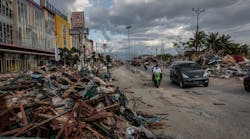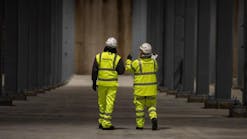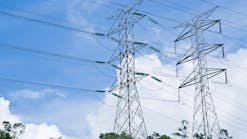The New York Times recently published a thought-provoking article that identifies several failures that led to greater than expected loss of life in the tsunami that struck Indonesia in September.
The Times article (https://nyti.ms/2NowGQF) highlights a set of lessons that we should learn, and it’s not just about tsunamis. It’s about our assumptions about the infallibility of technology, our assumptions about what the technology will actually do, and our reliance on a growing number of widely dispersed devices that may or may not be accessible for routine maintenance and that depend on a highly resilient communications infrastructure.
For the record, I am an advocate of technology and have deployed it heavily during my career in the utility industry and have led technology companies focused on advanced technologies for the energy industry. I also believe strongly in distributed resources. They can bring valuable diversity to the overall energy portfolio and significant potential enhancements to the performance and reliability of the grid.
Technology is advancing at a fascinating rate, and it can bring huge benefits for the customers and for our economies if we think about how and why we are deploying the technology. In addition to any of the policy, environmental or social objectives, we need to keep safety, reliability, resiliency and security of supply as top priorities in our thinking. Without these it will be difficult, if not impossible, to achieve any of our other objectives.
Communications Infrastructure
It is for these reasons that the Indonesia experience provides some valuable lessons for the energy industry, policy makers and our collective stakeholders, in our move to a distributed resource future. The Indonesian government clearly relied on their assumption that the cell towers (the communications infrastructure for the early warning system) would be there when they were needed most. Experience now shows us that, while this assumption may have been reasonable at the time is was made, it was, nevertheless, flawed.
How reliant is the energy industry on a communications infrastructure to enable the vision that many have for 100% renewable energy (much of which is distributed)? We saw a small sample of this when the Honeywell smart thermostat servers went down recently, eliminating the remote controllability of every one of the smart thermostats in the Honeywell fleet. Imagine that happening for the entire car charging infrastructure, or for home batteries, or for intelligent rooftop solar installations.
On the other end of the spectrum, PSE&G in New Jersey was surprised after superstorm Sandy to find that a large percentage of the 176,000 pole-mounted solar panels on its distribution system were intact and supplying energy back into the system, aiding in recovery.
The first lesson here is that we should challenge and rigorously test our assumptions about under what circumstances we can rely on this distributed set of resources. Maybe more importantly, we need to come to terms under what circumstances could we count on them not being there, and what we should do about it?
Maintenance Assumptions
The second lesson from Indonesia is one that many operations people in the energy industry already understand very well. This is that the more equipment you have and are reliant on, the more maintenance you must do. One of the failings in Indonesia was to not properly budget, plan for, or carry out maintenance on its tsunami warning buoys. It is not clear if it was one or all of these, and, in fairness, many buoys were reportedly vandalized. In the end though, the buoys did not do the job, and that job was vital to the safety of the population.
Clearly, in the design and execution of the early warning system there was an assumption that maintenance and upkeep would be done. In hindsight, this assumption was not reliable.
Customer-Owned DERs
For the energy industry this should lead us to question our own assumptions about customer-owned distributed energy resources (DERs). What are our assumptions about the maintenance requirements and longevity of those assets?
As we enter the second decade of operation of solar panels installed during the California Solar Initiative, what have we learned about longevity and homeowner willingness to invest in maintenance? Is the first generation of units likely to reach end of life in a coincident time frame? If they did, would that change our ability to meet the energy needs of the wider customer base? What level of load has grown behind the meter that is masked by the energy produced by the DERs? As customer DER assets age will more maintenance be required, and will homeowners make those investments and make them in a timely manner? In short, what do we know now, what do we not yet understand, and what scenarios should we be planning for?
The key lesson is that we should be testing all of our assumptions, really testing them, so that we can be confident that our assumptions and the resulting plans are as resilient as the system that we desire to build. By challenging our assumptions, we can find potential solutions for the unexpected.


